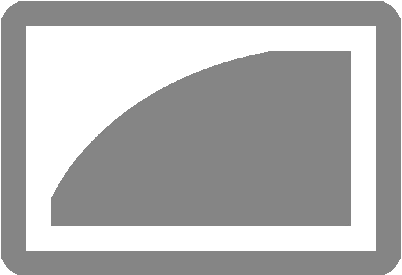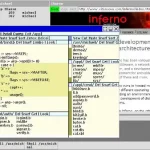Web site: www.cl.cam.ac.uk/research/srg/netos/projects/archive/pegasus/pegasus1.html
Origin: United Kingdom
Category: Desktop
Desktop environment: CLI
Architecture: x86, ARM, DEC AXP-3000, RISC
Based on: Independent
Wikipedia:
Media: Install
The last version | Released: 1999 (?)
Pegasus – a producing an entirely new operating system, whose design is geared to support of high-performance applications which require a consistent quality of service, such as those which use multimedia. This operating system, called Nemesis, is currently being implemented for DECstation (MIPS R3000-based) and DEC AXP-based workstations. Related systems are being developed for two different types of ARM-based machine.
Nemesis is a single-address-space system, with an extremely light-weight kernel (‘Nemesis Trusted Supervisor Code’, or NTSC), and strong emphasis on performing operating system functions in the user’s domain (thus avoiding the need for expensive protection regime changes).
An outline of the thinking behind the structure of Nemesis is to be found in the Kernel report on the laboratory’s ftp server. A copy of Eoin Hyden’s Ph.D. thesis is also available from there; Eoin worked in the Pegasus project during the latter stages of his research here.
The project has developed an interface definition language called Middl, in which interfaces to the Nemesis operating system (as well as to other services that the project defines) are specified. The specification of Middl (also known as Pegasus paper 94-16) is also available from the laboratory’s ftp server.
The interface specifications of a `recent’ version of Nemesis are available, formatted, as `Nemesis Structure and Interfaces’.
The Pegasus project (Esprit BRA 6865) is a collaborative research effort with the University of Twente (NL). Work on the Pegasus project finished in October 1995.
The Pegasus successor is Pegasus II.
Pegasus II takes the results of the Pegasus project as a starting point on which to build a complete distributed multimedia platform, including toolkits, user interfaces, filing systems and the emulation of familiar software environments.
The work is based on the philosophy of the Pegasus project:
– generic multimedia platforms, rather than single multimedia applications are the key elements of the “multimedia market” of the future,
– communication and processing should be integrated,
– resource management to provide application QoS guarantees is required.
Pegasus II is using the operating system kernel (Nemesis) and storage system built by the Pegasus project. The primary goal of this project is to add higher level functionality, whilst continuing with other areas of development, to increase the commercial viability of the Nemesis platform. Some important objectives are:
– To extend the range of machines on which the Nemesis system will be available and the coverage of Nemesis-based services. Hence Nemesis now runs on the Pentium PC architecture, DEC AXP-3000 series workstations, RISC PC, DECchip EB164 and EB64 Alpha evaluation boards and the DEC Systems Research Center IT board.
– To provide a standard environment (e.g., Posix) to enable the porting of current application software to Pegasus and a familiar programming environment for new (non time-critical) applications.
– To define and develop toolkits to provide the common scheduling, synchronisation and manipulation functions for continuous media needed by applications,
– To design and construct a user interface to enable intuitive interaction with the management of the network and workstation resources.



